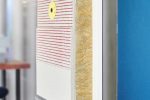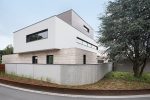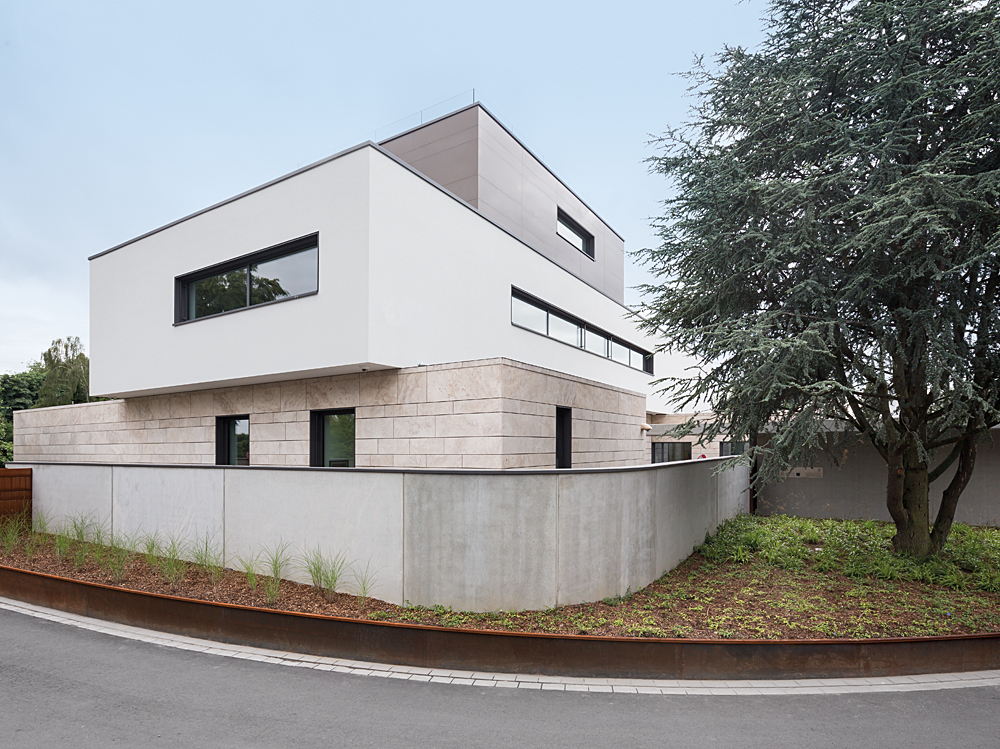Warngau/Düsseldorf/Frankfurt am Main (Germany), 7. February 2022 – There are many good reasons to insulate buildings better. It pays off for the wallet and the environment to reduce energy consumption and CO2 emissions. Also aesthetically, the façade can set individual and value-enhancing accents. Besides different finishing plaster variations in various colors, ETICS can now also be equipped with bonded surfaces to create new façade designs.
“Creative design options make External Thermal Insulation Composite Systems even more attractive – both in new buildings and in the energy-efficient refurbishment of existing buildings,” Alexander Schirra, Object Manager at Saint-Gobain Weber, is convinced. “The structural engineering tests for all system components of weber.therm style with Dekton have been completed, we expect the general approval of the DIBT and the ETA in 2022, and reference projects have also been completed.” The system already won the German Design Award with glass surfaces in 2016. Now, the scope for design in planning has been extended by yet another fascinating material.
Slim insulation with 0.4 cm and 0.8 cm thin Dekton® surfaces
“We are thrilled that Dekton is now also being used on ETIC systems,” says Ingo Riewenherm, Business Development Façade, Cosentino Germany. “There are a lot of great applications for the ultra-compact surface in ventilated curtain wall systems. The 0.4 cm thin version Dekton Slim also enjoys great popularity in interior design. Now it also offers innovative design possibilities in exterior applications.”
Dekton® consists of up to 20 natural minerals that sinter in a climate-neutral process under high pressure and heat to form an ultra-compact surface. The panels are manufactured in five thicknesses (0.4 cm, 0.8 cm, 1.2 cm, 2 cm and 3 cm) in large dimensions of 320 cm x 144 cm and cut to customer specifications. More than 50 different colors and textures are available. There are no limits in terms of creativity, individual designs are also possible.
Great design possibilities for ETICS
External Thermal Insulation Composite Systems have been proving their value in optimizing the energy efficiency of the building envelope since the 1960s. In this process, insulation boards are bonded to the wall former, then a reinforcement layer and a plaster system are applied. ETIC systems provide continuous insulation of the building envelope – without thermal bridges caused by fixation elements. The most common surface finish is formed by finishing plasters in various colors and structures. weber.therm style expands the possibilities of façade design to include all sheet materials, such as glass, natural stone or ceramic panels like Dekton®.
During installation, a laser scanner is used to ensure that the building envelope is even and plumb and a detailed survey is taken. The façade panels are then cut to size according to the works list and bonded to the ETICS on site using the buttering-floating method. To facilitate handling, formats of up to 1 m x 2.25 m are generally used. The weight per unit area may be up to 75 kg/sqm.
Weber.therm style with Dekton® was presented for the first time on November 25, 2021 at the 1st Cosentino Façade Day in the NEXT Studio Frankfurt am Main (Germany). Click here for the recording of the webinar (in German).








